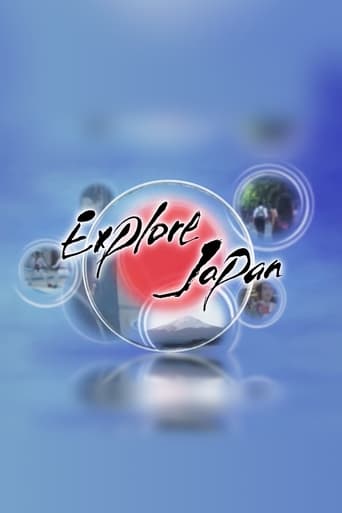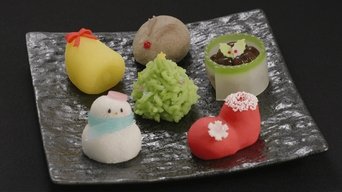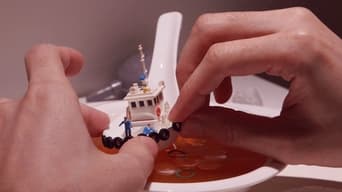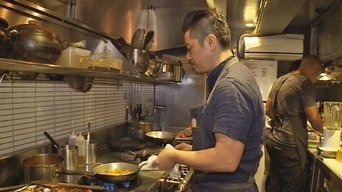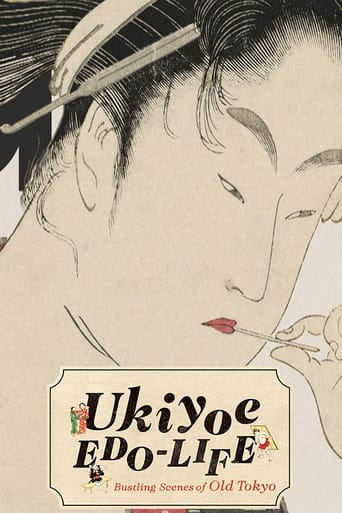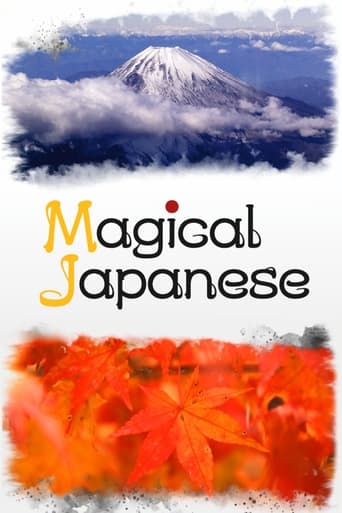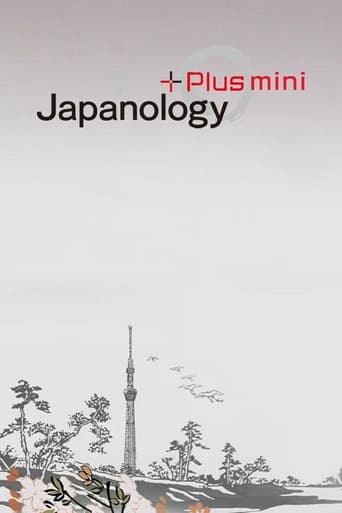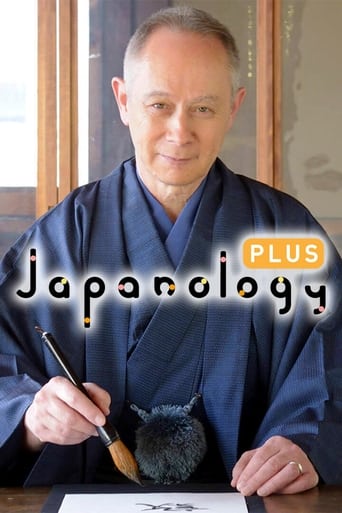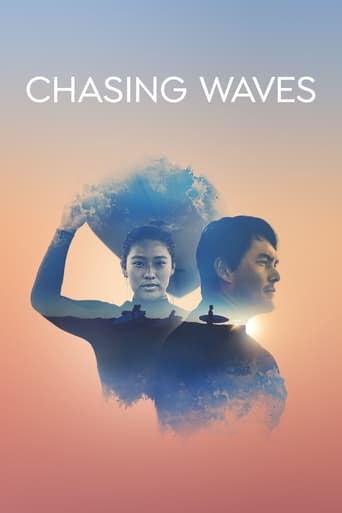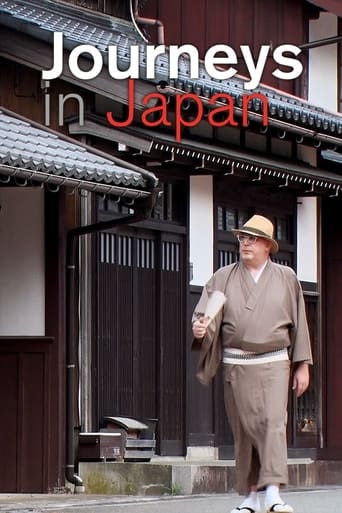Explore Japan Season 1
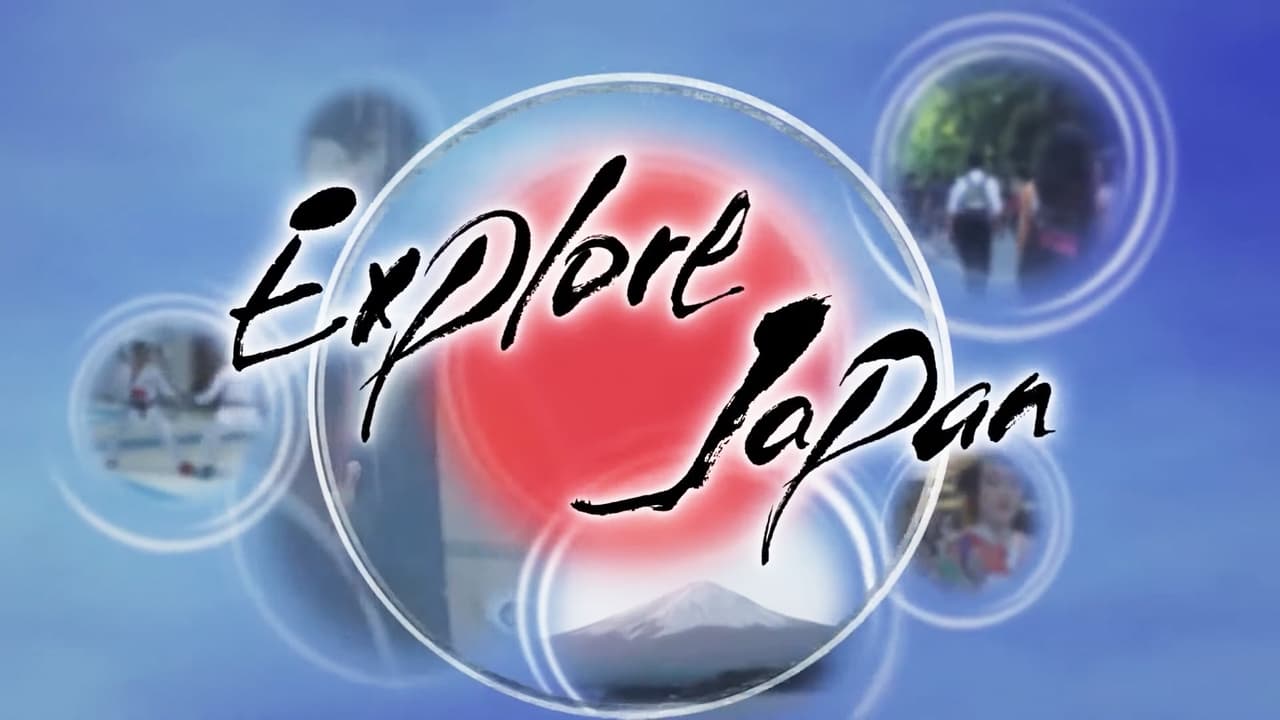
Japan continues to thrive as it incorporates cultural elements of music, fashion, cuisine, sports, arts and science from around the world. People’s encounters trigger the fusion of Japan’s and the world’s diverse culture, unceasingly producing a myriad of new phenomena and events. This series will feature how various culture in modern Japan and overseas blend together and influence each other.
Watch NowWith 30 Day Free Trial!
Explore Japan
2016 / NR
Japan continues to thrive as it incorporates cultural elements of music, fashion, cuisine, sports, arts and science from around the world. People’s encounters trigger the fusion of Japan’s and the world’s diverse culture, unceasingly producing a myriad of new phenomena and events. This series will feature how various culture in modern Japan and overseas blend together and influence each other.
Watch Trailer
With 30 Day Free Trial!
Explore Japan Season 1 Full Episode Guide
Let JAPANorama Rumble take you on a journey to both West and East Japan and highlight the amazing landscapes and ‘panoramas’ to be found there. Using a combination of visuals and the power of the spoken word, this is a unique comedy panel show format – so you will laugh and learn! On either side of the MC, we have a comedian representing, debating, and battling for their half of Japan, trying to persuade the judging panel to check out their side. The program features some of the most beautiful sceneries found in Japan, giving historical background information, and stunning imagery, presented in a hilarious way as only comedians can!
Kyoto has a history of 1200 years. Its numerous shrines and temples make it one of Japan’s leading tourist destinations. Hidden in this ancient city are alleys called “Roji.” Many of them can’t be reach by car, yet they are just a step away from the main streets. Once you enter a Roji, there’s a scene of Kyoto that surprises visitors. Craftspeople from all over are attracted to the area. Many are rebuilt and given new life, with each Roji having its own character. Grandma feline Eki takes us on a unique tour.
There are as many dietary lifestyles as there are cultures in the world. Is it possible to follow religious or moral dietary restrictions in Japan? Harry Sugiyama will answer that question by exploring Japan’s growth of vegan, vegetarian, and halal-friendly restaurants and shops. Can vegetarians comfortably visit Japan? Where in Tokyo is Islamic Street? Is there such a thing as vegan desert? Find out the answers to these questions and more while exploring the cutting edge of Japanese food diversity. Not to mention some dos and don’ts to help navigate the formalized Japanese gourmet scene.
The delectable Japanese confectionary tradition of wagashi dates back to ancient times, featuring shapes and flavors that change with the seasons. Sanno Hiroyuki, 39 years old, is a freelance artisan who is revolutionizing the world of wagashi. His social media posts often go viral, reaching young people all across the globe. He doesn’t have his own shop, but he gets orders from overseas as well. What’s the appeal of his creative approach to wagashi? We’ll follow Sanno as he forges delicious new paths in this age-old craft.
Japan is a highly forested nation, with forests occupying nearly 70% of its land. The varied altitude of the Japanese archipelago stretching east to west gives rise to regionally and seasonally biodiverse trees. From housing to daily essentials, Japanese people have long built wood into every aspect of their lives, developing a unique culture with the material. We seek out that elusive knowledge and mastery of woodworking, visiting Kiso, Hida, and Kishu, 3 regions of Japan that are known for their connection to wood.
Frenchman Emmanuel Marès meets experts at famous gardens in Kyoto, to explore the unique aesthetic of Japanese gardens. First, he visits Saiho-ji Temple, nicknamed "moss temple" because its garden features over 120 types of moss. He speaks with modern-day priests to learn more about its connection to Zen philosophy. Next, Marès heads to Shoden-ji Temple, which takes up the “borrowed scenery” that incorporates a mountain as a spectacular backdrop for its garden. What is the fascination of the garden of the borrowed scenery that rock star David Bowie often visited and was deeply moved? His third destination is Kennin-ji Temple, where the rooms overlooking the garden feature famous folding screens and fusuma paintings. In one of the rooms, the temple commissioned a new fusuma painting by an artist who incorporated dyeing techniques into her paintings, creating a masterpiece of modern art, collaborating with the garden scenery.
The Japanese are captivated by a game with one simple rule: Solve the puzzle and escape the room. What began as an online escape game has evolved into the “real-life” escape game, an in-person experience filled with adventure and entertainment. In this program, Arisa reports on the masterminds behind these captivating real-life escape games. Also, learn about the very first junior high school in Japan to incorporate the real-life escape game into their entrance exams. We interview the faculty, as well as students who took the exams. In addition, Arisa tries her hand at a game that has been created by first-year junior high school students. Join us as we visit the game creators in their workplace, interviewing Kato Takao, one of the people responsible for the game’s popularity. We were also allowed a peek into the atelier that is the birthplace of the intriguing special effects such as bombs and treasure chests. Join Arisa as she experiences the mysterious items for herself!
Anime Dramatic Tours (ADT) is a fictional travel agency that provides guided tours of famous locales featured in Japanese anime films and television series. Join ADT travel guide Sascha as he navigates the exciting world of anime, comparing well-known anime destinations with the real-life spots on which they are based. On this particular day, the ADT office welcomes Yuriko Tiger, a popular cosplayer from Italy. She signed up for a tour after hearing the city of Nishinomiya in Hyogo Prefecture is home to destinations featured in her favorite series, The Melancholy of Haruhi Suzumiya. Following the tour, Sascha provides a behind-the-scenes look at The Tatami Galaxy, an anime based on the novel of the same title by Morimi Tomihiko. Sascha’s tour also introduces Yuriko to the delicious local treats featured in the anime. This is an unforgettable experience of Japan like never before, recreating the experiences of the anime characters in the exact same locations. Have a wonderful trip!
Musician, Yoshii Shogo. A master of Taiko drums and flutes, Yoshii shows the world the many wonders of traditional Japanese music. We document his journey to find the origins of music within the roots of the local arts, following along to see what emotional souvenirs he can find to pack inside his Music Trunk. The journey takes us to Shimane Prefecture for an inside look at the traditional art of this region: Iwami Kagura. Flutes and drums play the rhythmic Ohayashi. Gods and demons dance the Mai. It is said that a Kagura performed for the Gods at the festival brings a plentiful harvest. He meets the locals and learns what the Ohayashi means to them. Passed down and felt innately within, it is the sound of their spirit. As Yoshii performs with the group, he gets in touch with their Kagura spirit and uncovers the essence of traditional music.
In Nara’s Asuka district, where Japan’s capital was located during the 7th century, you’ll find Horyuji Temple, home to the oldest wooden buildings on earth, still standing after 1,300 years. During extensive repairs in the Showa period, attention turned once again to the kanna, or Japanese plane, and its role in maintaining the surfaces of wooden buildings. Expert carpenters from across Japan gathered in Aichi Prefecture to compete in a kanna competition, seeing who could create the thinnest shavings of wood. There, we met with a legendary kanna master and three-time winner of the contest. Using cutting-edge video technology, we’ll reveal the master’s techniques, which lend durability to building materials. In the workshop of Chiyozuru, a brand that has won favor with skilled carpenters, we’ll reveal the essential skills that go into crafting a kanna. This program uses the latest measuring instruments to illuminate the sophistication of traditional Japanese craftsmanship.
Bread is enjoyed by people around the world, and while it seems like a Western staple, Japan too has a long bread history that goes back to the late 19th century. An essential part of Japanese food culture, the country is currently seeing a unique evolution in its bread scene. Japan is the birthplace of many types of bread including anpan, melonpan, and currypan. In this program, meet two bread artists gaining recognition for their eye-catching bread inventions. First is Ran, the creator of the “Illustration Bread,” who now has over 330,000 social media followers. The bread she creates reveals delightful visuals as the loaf is sliced. The second bread artist is Elly, who is redefining the melonpan with her colorful, decorative creations. Join us as we step into the world of picturesque bread-making, with Elly and Ran as our guides. A treat for the eyes as well as the mouth, see how the Japanese bread world continues to innovate and surprise in modern times.
"GO ON" is a group of young masters of traditional crafts who continue to take on new challenges in the ancient capital of Kyoto. They are creating new crafts using their unique techniques and advanced technology as a way of passing on the traditions, with the gratitude to their ancestors. The six craftspeople of GO ON continue to take on new challenges both individually and as a team. Their activities are not limited to Japan, but are expanding overseas as well. We followed their challenges.
Japanese gardens play a very special cultural role, bringing nature into everyday life. They charmed a young Swede so much that he moved to Japan, changing his nationality. Now known as Murasame Tatsumasa he works as a gardener. He visits four famous authentic gardens in Kyoto and explores their unique beauties with nation’s cultural experts. He visits a tiny courtyard garden, a historic masterpiece by Kobori Enshu, a tea house garden, and a modern Japanese garden. Join Murasame on a 30-minute journey of aesthetic exploration.
Ginza, Tokyo. Japan's traditional culture is protected within this modern district. Here, artisans work unseen to preserve time-honored crafts. We visit a small workshop that's been producing tabi, or Japanese-style socks, since the 18th century. We also examine the impressive Mannen Dokei, or perpetual clock, devised by genius engineer Tanaka Hisashige. The specialists who replicated the Mannen Dokei continue to create exquisite timepieces in Ginza. Their respect for their predecessors and determination to preserve their craft provide clues into how a sustainable society can be achieved.
The world of miniatures is a surprisingly whimsical one, and among it Japanese miniatures have gained a worldwide reputation for being exceptionally unique. In 2020, one of the world’s largest indoor miniature theme parks opened in Tokyo. We watched the craft of a miniature artist with over 2.5 million followers on Instagram, as he uses his incredible imagination to create art with substitution, or mitate: Ordinary objects such as staples and vegetables stand in for scenery or landscape to create immense worlds. Another artist specializes in miniatures carefully recreating the images of rooms and buildings so as to immortalize the memories found within. His works portray the recollections of those who order the miniatures, and the Japanese sensibilities embodied by them. Examining the creations of 3 different miniature artists, the program explores Japan’s largely unknown history of miniatures, and what it is about them that has earned such an adoring following in Japan.
The Somin Naked Festival has been passed down for more than one thousand years at a mountain temple, deep in snowy Northern Japan. This physically demanding, purification rite is held annually in the coldest month of the year—February. Hundreds of men gather at the rustic Kokuseki-ji temple on New Year’s Eve according to the lunar calendar. Wearing only fundoshi loincloths, they embark on a nightlong test of endurance in a bid to ward off evil and invite in fortune. On this program, Canadian TV personality Kyle Card makes his way to Oshu, in southern Iwate, to join in this enigmatic festival. First, he must purify himself in advance of the ritual. He adheres to a strict Zen shojin diet. Later, he sits Zazen at a training temple to practice asceticism and focus his mind for the harsh festival. Kyle experiences the pain, the thrill, and the glory. He gains firsthand insights into the significance of the Naked Festival—an experience beyond his wildest dreams.
Tokyo is a city where you can find cuisine from all over the world. Recently, Peruvian cuisine is becoming more and more popular. In fact, it actually has a deeply intertwined connection with Japanese culinary culture that stretches back to an era when many Japanese had emigrated to Peru. Dishes that mixed Japanese essentials such as soy sauce and miso were known as “Comida Nikkei” and very popular, leading to its incorporation into the local culture. On this program we follow Bruno Nakandakari, the chef at a Peruvian restaurant in Tokyo. Bruno takes advantage of Japan’s fresh seafood to make Peruvian cuisine unique to Japan. We’ll find out Bruno’s background and why he wanted to open a Peruvian restaurant in Japan, as well as explore the surprising connection between the two culinary cultures. Meanwhile, the world-famous Peruvian superfood Quinoa is beginning to be grown in Japan. Our reporter takes a closer look at the Quinoa farming industry.
Japanese technology plays a pivotal role in global space development. This role is symbolized by the unmanned cargo transporter HTV “Kounotori”, the subject of this documentary. In recent years, U.S. and Russian supply ships have suffered several setbacks. The only craft to complete all its missions is Kounotori. What kind of Japanese technology lies behind this dependability? This program takes an in-depth look at Kounotori and the Japanese technology that keeps it flying.
Aikido is a Japanese martial art in which the opponent’s attack is redirected to avoid damage, rather than opposing it head-on. Currently, it is said that there are around one million practitioners of Aikido in 130 regions and countries around the world. Many students from overseas come to learn Aikido in Japan. There is an Aikido Dojo in Shinjuku, Tokyo where a number of Aikido students from abroad come to practice every day. One of them aspires to open his own Dojo back in his country. Another student is on a self-finding quest and has dedicated everything for Aikido in the past few years. People with different goals and a variety of reasons in life gather to this place to practice Aikido. What do they hope to achieve? The program features Aikido’s appeal seen through international students’ perspective.
Japanese anime and manga have countless fans overseas. Many of them are teenagers. Some of them have been inspired to become high school exchange students. On this program, we meet three such exchange students who are attending Meiji Gakuin Senior High School in Tokyo. They enrolled in the school year starting April 2016. The students came with many expectations. One they didn’t anticipate was the rigor of school life. After a commute, they start classes from 8:30 a.m. and finish around 3:00 p.m. After school, they all participate in school clubs. And while back home they might look forward to the weekend, here at this private school, Saturdays are spent on campus. This documentary captures the three students living in a foreign culture at the height of adolescence. We see Japanese high school life through their perspective. We also see that these students are getting much more than an education during their year abroad.
Yamanashi, one of Japan’s most famous wine producing regions, is home to Grace Winery, winner of a gold medal at a major international wine competition, three years running. It makes a white wine using Koshu grapes, a variety unique to Japan, which it cultivates. The dry wine is pure and elegant, and has a concentrated fruit flavor with crisp acidity. Very popular, it’s exported to twenty countries around the world, including Belgium, where it’s served at top-class restaurants. The wine's delicate flavor, which doesn’t clash with food, is highly prized in the current Japanese food boom fueled by the global trend to live healthier lives. The winery's chief winemaker is Ayana Misawa. Koshu is regarded as a low-sugar, delicate wine with moderate aromas. Japan's wine producing regions have to grapple with heavy rain during the growing season. We reveal how Ayana Misawa created a world-class wine in this challenging environment.
Free Trial Channels
Seasons


